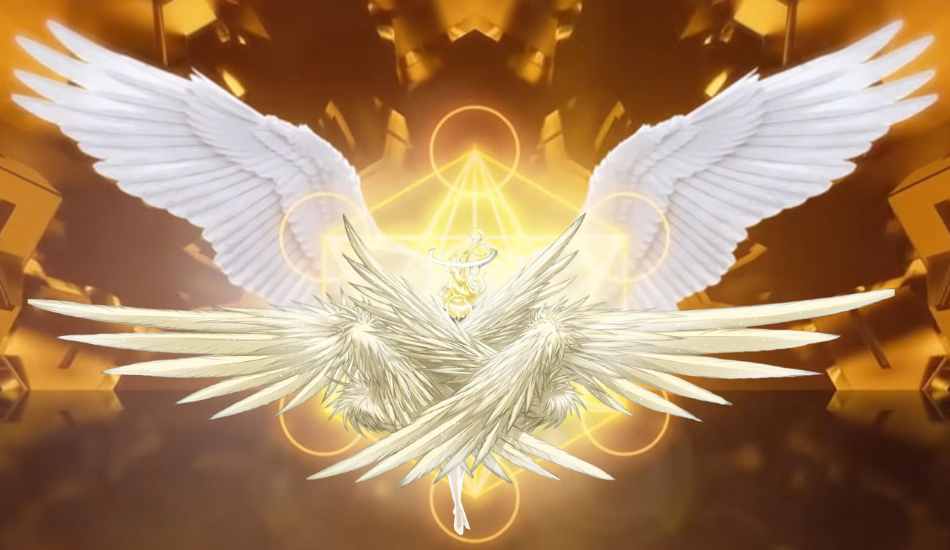Most people’s mental image of an Angel is that of a magnificent humanoid with wings. Cupid is based on a reimagining of cherubs, a biblically referenced sort of angel, as winged infants. These conceptualizations about how angels really look like, however, have certain inaccuracies. According to the Bible, angels have a more eccentric research.
How angels really look?
The Bible describes a wide variety of angels serving in God’s presence. The 12th-century Jewish philosopher Maimonides established a ranking for these entities inside the heavenly system. What follows is an explanation of four such hierarchical entities that have been given extensive biblical explanations, together with the historical contexts in which they were first conceived.
Cherubim
One of the four archangels, the Cherubim (later abbreviated to Cherub) is the least high in rank. Animal and human hybrids, as commonly described in the Holy Book Bible, were entrusted with protecting Eden from human beings.
Angels appear to the respectful prophet Ezekiel in the Holy Book of Ezekiel with 4 different appearances: First is a lion, second is an ox, Third is a falcon, and fourth is a human. The bull hooves on their feet shine like polished brass, with straight legs and four wings. They have two sets of wings: one that protects their entire body and allows them to fly.
Modern Depictions
How angels really look like doesn’t sound anything like the Cherub as we know him now. While modern depictions of it may be traced back to Greek and Roman gods like Cupid, biblical references are credited to early cultural interactions with Babylonia, Syria, and Egypt. The Cherub, like the Egyptian Sphynx, as well as Hittite Griffin, serves as a guardian of sacred sites and has a hybrid look.
The Hebrew word meaning “messenger” (Mal’ akh) is the etymological ancestor of the Greek word Angelos, from whence we get the English word ” The Malakim are God’s messengers; they also happen to look a lot like us. They come in at number three out of the big four.
Like the angel of destruction in the Passover account or Michael, the messenger of God who guards heaven, they carried out God’s will in the Old Testament. They frequently played the role of messengers in the New Testament, such as Gabriel, who delivered the news of Mary’s miraculous conception to her. When asked to visualize an angel, these specific ones commonly come to mind as like a dream.
Malakim
The Malakim resembled humans, although the Bible makes no mention of their having wings.
A definition of how an angel looks without wings dates to the middle of the 3rd century when Christianity was still in its infancy. It was not until the end of the 4th (fourth) century that artists or participants began depicting angels with wings re again. Even while painters knew the text did not depict them as having wings, some professionals believe this was done to emphasize their exquisite nature.
Seraphim
The Seraphim are very celestial beings that circle of God’s throne and sing “holy, holy, holy” in the unison whenever God Almighty draws near, as the prophet Isaiah addressed. What did the prophet say? There are only 2 of their 6 wings are utilized to fly, while the other 2 wings are used to cover the tops of their feet and also heads. According to Maimonides, the seraphim are the second-highest order of angels.
The Hebrew word “Seraph”
The origins of its name Seraphim can be deduced from its same-time recorded allusions. The legend Hebrew word “Seraph,” is translated literally as “to burn” in English, so, where the exact name “Seraphim” comes usually from. After accomplishing some history research, I found that the Hebrew term “Saraph” means “venomous desert snake” Among ancient Egyptians, the cobra was known as “the flaming one.” Its symbol, Uraeus, was repeatedly seen on the crown of Pharaohs.
The writers of the Old Testament may have been inspired by Egyptian imagery and connections with the cobra to create the picture of the Seraphim with their flaming wings.
Ophanim
The Ophanim, often known as “the wheels,” are the Bible’s most outlandish creatures. According to the biblical description given by Ezekiel, these entities have the form of interconnecting gold wheels whose exteriors are covered with many eyeballs. To get about, they just float through the air. Maimonides places them at the top of the food chain, and it is their job to protect the seat of God.
The Ophanim’s beginnings throughout history are murky. A former NASA employee named Josef F. Blumrich speculated that the image of the wheels and other angels seen by Ezekiel was indeed a UFO. But detractors have branded him a conspiracy theorist. So, the question still in mind is how angels really look like?
Others, however, argue that the prophet’s vision was induced by the consumption of a hallucinogenic drug. Some researchers have argued that the picture was only a symbol meant to represent the enigma that is God.
Concluding Ideas for how angels really look like
It’s fascinating to step back and see how these entities are conceived of in a purely secular context. What we have collectively lost and reimagined as angels has been formed by centuries of culture, geography, and history.
Christians and Jews who believe in the Bible take note of these entities because of their otherworldly characteristics. If they are good enough, God will let them spend eternally in Heaven with him and these strange creatures.



